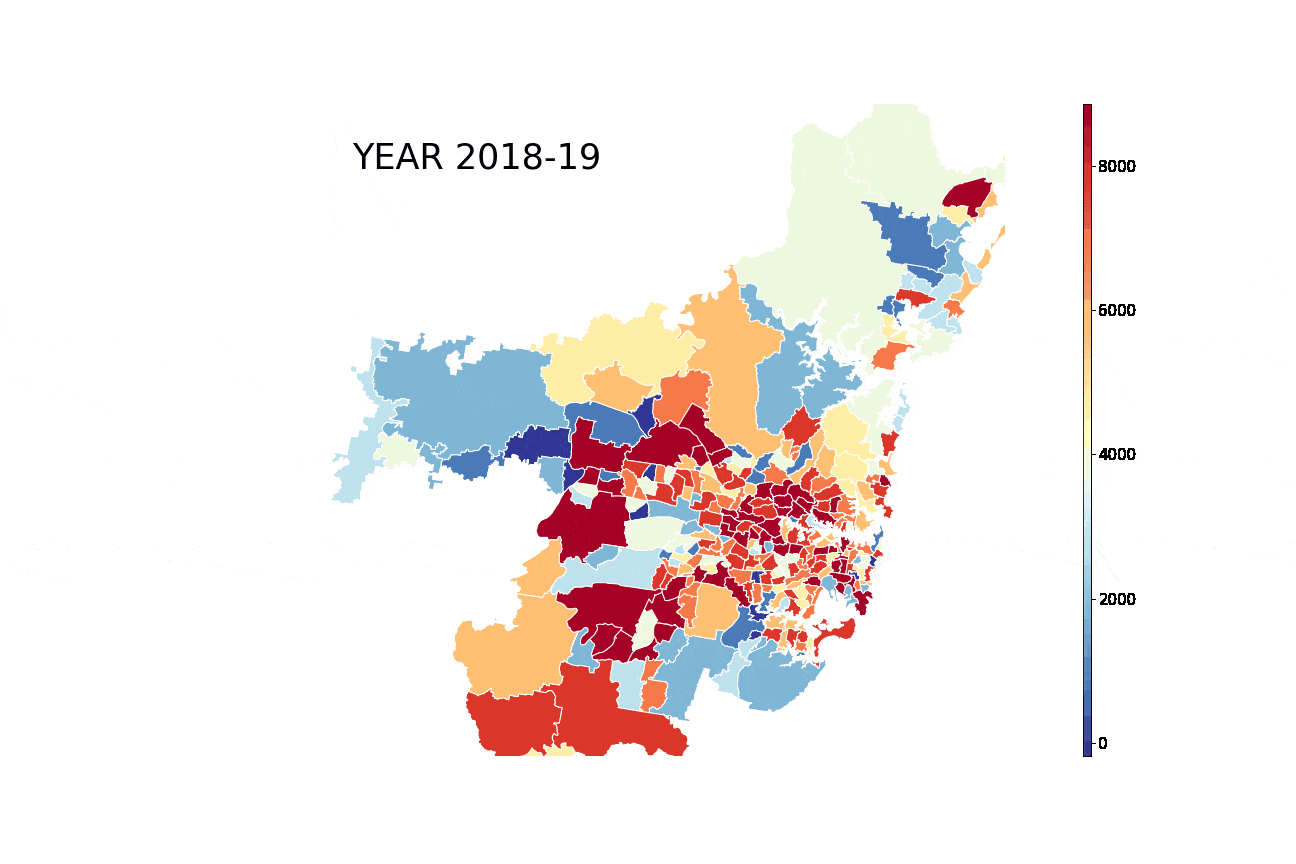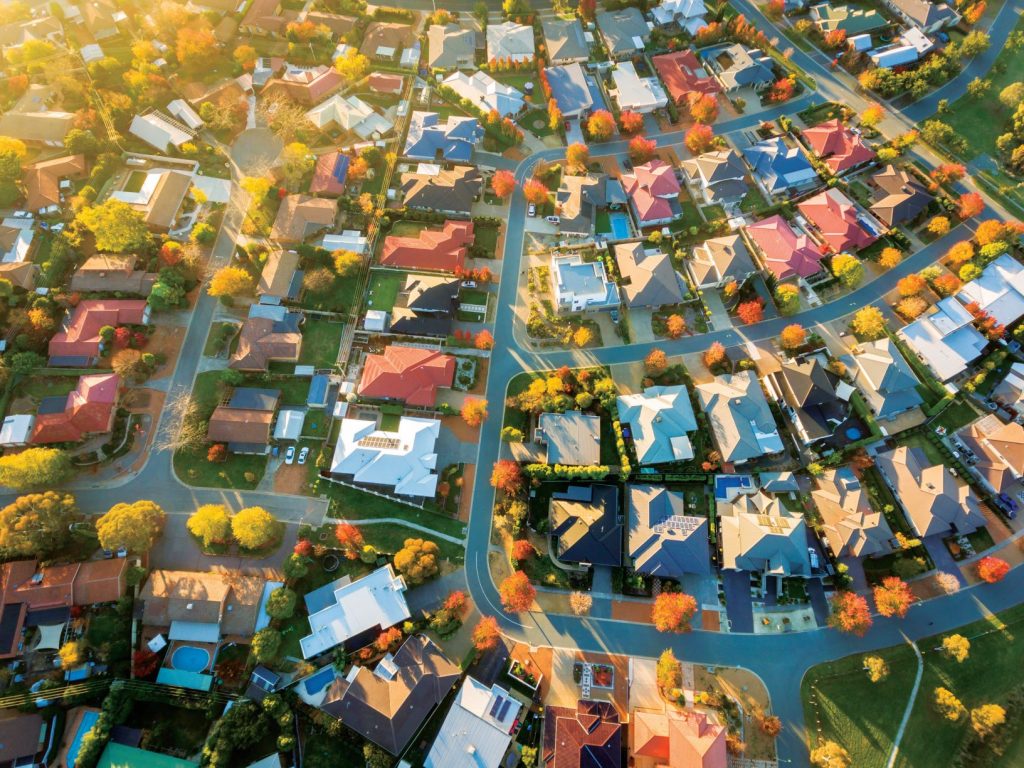With the new suburb-level data from the ABS recently released, it gives us the first indications that COVID-19 restrictions have been felt differently across Sydney.
Data showed that in 2020 the biggest population growth in Sydney were in outer growth areas – Riverstone-Marsden Park and Cobbitty Leppington with between 37,000 and 44,000 in each place and somewhat surprisingly, an inner suburb of Waterloo-Beaconsfield which is seeing significant infill and density increases. We saw the biggest growth for all of Australia in Blacktown with Riverstone-Marsden Park growing by almost 9,000 people. There was also strong growth in Bringelly and Rouse Hill. Across these areas where growth took place the main driver was internal migration – that is people moving in from other parts of Sydney and elsewhere in Australia.
In contrast there were many places that declined in size during 2019-2020 by up to 180 people in some places. These places that declined were geographically spread – from Mt Druitt, Fairfield and Auburn in the outer suburbs, to Lakemba in the middle ring and Mosman and Neutral Bay closer to the inner city. In these suburbs that lost population in 2020 compared to 2019, while there was growth from natural increase (the difference between births and deaths) and growth from net overseas migration, these were offset by losses from internal migration – more people leaving for elsewhere.
Looking at these declines (in blue in the map) or where there has been stable population size (in the green shades) we can see that it is the populations in the middle ring of suburb who have seen much slower population growth in 2020 compared to 2019.
Looking at these declines (in blue in the map) or where there has been stable population size (in the green shades) we can see that it is the populations in the middle ring of suburb who have seen much slower population growth in 2020 compared to 2019.

A key factor to watch is that these data, which are estimates to 30 June 2020, is that there is no negative net overseas migration. This undoubtedly reflects the fact that the estimates only capture the very start of the COVID-19 pandemic. Recent state level data for September 2020 shows that Sydney is seeing net overseas migration loss.
Understanding those places already seeing population decline give us an early warning indicator of where further population constriction may happen in the future. This has significant impact across all areas of how we plan for places to enable communities to thrive, from knowing where to plan for schools to where focus on economic activation should be invested, population trends help us frame better decisions.
